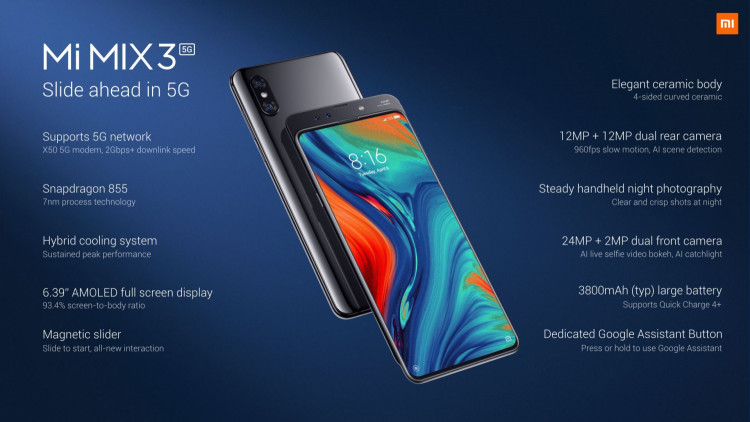Xiaomi has joined the 5G smartphone race and did it the best way too: by introducing a 5G-capable smartphone affordable enough for most to buy it. Enter the Mi Mix 3 5G.
The Mi Mix 3 5G is basically a beefed-up Mi Mix 3, fitted with more powerful components that allow it to use 5G networks. Compared to the existing Mi Mix 3 that uses a Qualcomm Snapdragon 845 processor and X20 LTE modem, the new version uses the Snapdragon 855 and X50 5G modem, VentureBeat reported.
With these upgrades, Xiaomi says the new Mi Mix 3 5G will connect to a sub-6GHz 5G network and will reach data speeds up to 10 times faster than 4G LTE, Digital Trends reported. This means faster network connectivity at a relatively lower cost compared to other announced 5G phones.
Aside from a new processor and modem, the Mi Mix 3 5G also features some slight changes to its 4G sibling. It now has a larger 3,800 mAh battery (compared to the 3,200 mAh battery in the 4G version), and also features a few changes in size and weight (the latter likely due to a larger battery).
Although Xiaomi isn't the first to unveil a 5G entry at the MWC, it is the first to announce the cheapest model to date. This first foray into relatively new territory will prove just how capable the Chinese giant is in terms of introducing affordable yet innovative products -- like OnePlus, another Chinese company that churns out high-end phones.
Aggressive pricing
Unlike other 5G smartphones that took breaths away at the MWC with their staggeringly high prices, Xiaomi's first 5G phone elicited gasps with a surprisingly low price, Reuters reported. Samsung and Huawei's 5G-enabled folding smartphones will be sold for $1,980 and $2,600 respectively. The Mi Mix 3 5G, on the other hand, costs only $680.
Xiaomi Senior Vice President Xiang Wang said the Mi Mix 3's "aggressive" low price is meant to make 5G very affordable and thus highly accessible to more consumers. Wang knows what he's talking about -- the Chinese company has already overtaken other brands in some locations, particularly India, in terms of smartphone sales in 2018.
Xiaomi is also looking to make it big in Africa, a country that, according to Wang, has huge growth potential. African countries are transitioning from 3G to 4G, which makes it a good place for Xiaomi to introduce their 4G devices. Wang said they will learn from the African market's response, and perhaps introduce new products for it.





